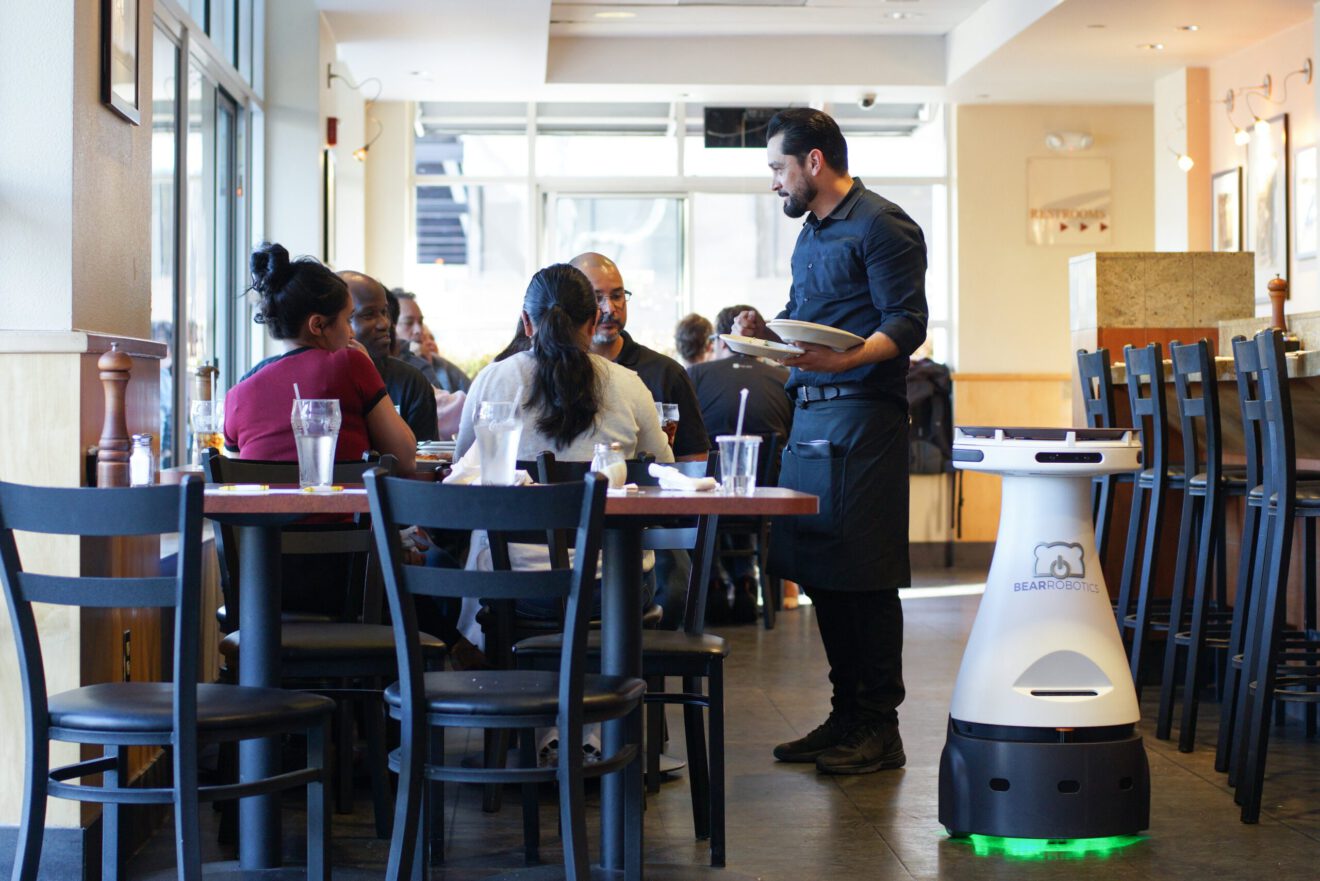As robotics technology advances and becomes more accessible, its applications for foodservice are mounting. Machines designed to help in both the front and back of the house can help operators increase safety and efficiency, and allow staffers to shift their focus to the customer experience.
Four in five restaurant operators agree that technology makes their restaurant more productive, according to the 2016 Restaurant Technology Survey conducted by the National Restaurant Association. While some may translate increased productivity into a need for fewer workers, the reality is that many of the emerging technologies are designed to work alongside — not replace — human employees.
Food making robots such as Sally the Salad Robot from Chowbotics and Miso Robotics’ burger flipping robot, Flippy, are designed as tools to be used by people. Whether it’s refilling salad ingredients or forming the burger patties that go on the grill, these robots rely on human staff members in order to complete their tasks. These robots aren’t yet widely available, but 13% of restaurant operators said they would implement automatic food preparation systems if they had access to them, according to the 2016 Restaurant Technology Survey.
“Robots are increasing efficiency in foodservice jobs and giving users more options,” said Chowbotics’ Vice President of Marketing Slaton Smith, who explained that robots like Sally increase can increase food safety and eliminate the need for employees to do “tedious and repetitive” tasks.
This idea of freeing up employees’ time to allow them to focus on other tasks was central to the creation of Penny, a serving robot designed by California-based Bear Robotics. The self-driving robot can carry a tray of food to the dining room or assist in bussing tables by carrying away used plates.
“There can be five, six, seven things at at time a server is required to do and think about,” said Bear Robotics co-founder and Chief Operating Officer Juan Higueros. “Having a robot can actually shed some layers off of those things so they can become more focused on how they can serve their customers better, establish a rapport with their customers and be able to actually give them more attention instead of going back and forth and doing the stuff that actually grinds them down.”
Co-founder John Ha worked as a Google engineer before becoming a restaurateur, and watching his waitstaff at work sparked the idea for Penny. “Restaurants are a very heavy labor place,” he said. Witnessing how taxing it can be to carry heavy trays all day inspired him to create a robot to lighten the load for employees.
Creating an environment that puts less stress on workers’ bodies gives eateries an edge when it comes to employee retention. Having the opportunity to work with cutting edge technology can also give workers a sense of pride, said Ha, who began testing Penny in 2017 at his California restaurant, which he recently sold. Bear Robotics is currently piloting the robot at 10 local restaurants and one major restaurant chain in South Korea. In 2016, nine percent of operators surveyed by the National Restaurant Association said they would implement automated onsite drink or food delivery if the technology were available.
Robots for foodservice are on the leading edge of technology, and working with new technologies can give foodservice workers an opportunity to expand their skill sets, Higueros said.
Smith said he and the rest of the Chowbotics team “believe that Sally will streamline labor, and in the process, create new jobs.” As more restaurants invest in robots, it may pave the way for employees to develop skills in logistics in order to facilitate daily ingredient deliveries, as well as the technical skills related to robot maintenance.
__________________________________________________
If you enjoyed this article, join SmartBrief’s email list for more stories about the food and beverage industry. We offer 20 newsletters covering the industry from restaurants to food manufacturing. And be sure to follow us on Twitter for the latest industry news.
